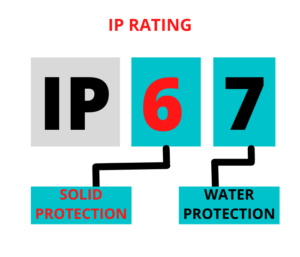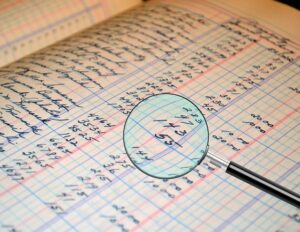Table of Contents
What is an electric load?
In simple terms, electric load refers to the amount of electrical power required by devices or equipment to operate.
It’s the demand placed on an electrical system by these devices. Electric load can vary depending on the type, size, and number of devices in use.
Electrical load Example
- A light bulb (60W) is a small load.
- A washing machine (1,000W) is a larger load.
Why It Matters:
Understanding electric load is important for:
- Sizing electrical systems (like wires, breakers, or generators).
- Preventing overloads that could damage equipment or cause power outages.
- Improving efficiency by managing electricity consumption.
Types of Electric Loads:
- Resistive Load:
- These loads convert electrical energy directly into heat (and sometimes light).
- Behavior: Current and voltage are in phase (unity power factor).
- Examples: Heaters, incandescent bulbs, and toasters.
- Key Point: Simple and predictable with no reactive components.
- Inductive Load:
- These loads rely on magnetic fields to perform work, like rotating motors or stepping transformers.
- Behavior: Current lags behind voltage (lagging power factor).
- Examples: Motors, transformers, and fans.
- Key Point: Introduces reactive power, which impacts system efficiency and requires compensation.
- Capacitive Load:
- Rarely seen in general systems but used for specific functions like power factor correction.
- Behavior: Current leads voltage (leading power factor).
- Examples: Capacitors in industrial applications or reactive compensation banks.
- Key Point: Used to offset inductive loads and stabilize electrical systems.
Why It Matters:
Understanding load types is critical for:
- Designing efficient systems: Proper wire sizing, breaker selection, and avoiding overloading.
- Managing power quality: Addressing power factor issues and balancing reactive power.
- Improving system performance: Ensuring devices operate within safe and efficient parameters.
For more information about Active (apparent) Power, Read My article here.
What is the measuring Unit of Electrical Load?
The unit of electrical load is typically measured in watts (W) or kilowatts (kW). These units represent the rate at which electrical energy is generated, transmitted, or consumed.
Other related units used in the context of electrical loads include:
- Volt-Amperes (VA): This unit is used to measure the apparent power in an electrical circuit, which is the combination of real power (watts) and reactive power (VARs) in an AC circuit.
- Kilovolt-Amperes (kVA): This is a larger unit of apparent power, commonly used for larger electrical systems, such as in industrial or commercial settings.
- Power Factor (PF): This is a dimensionless quantity representing the ratio of real power to apparent power in an AC electrical circuit. It indicates how effectively electrical power is being used.
Electrical load calculations & formula
Calculating electrical loads can be performed by calculating load power or load current.
Electric load current formula:
Single-Phase current calculation:
Single Phase Load current, I = P ÷(V× PF)
Where P is power in watts, V is operating voltage and PF is the power factor.
Let’s Take the values of P (Watt) and Voltage, P= 800 W, V= 230V, P. F= 0.9
Load current, I = 800 / (230× 0.9) = 3 Amp
Three-phase current calculation:
Three Phase Load current, I = P÷ √3 V × P.F
Let’s Take the values of P and Voltage P=1000 W, V= 440 V, P.F = 0.9
I (3 phase) =1000 ÷ (1.73 × 400 × 0.9) = 1.60 Amp
Now, let’s calculate load power, Power can be real or apparent power. Real power is calculated in KW, and apparent power is calculated in KVA.
Load (KW) Calculation formula:
The unit used to estimate the real power is KW, we calculate power in KW in case of resistive loads or calculating the real power of the load.
Single-Phase Power Calculation:
P (KW)= (V × I × PF) ÷ 1000
Example:
Let’s assume the values of current and volts V (Voltage)=220 V, I (Current)=5 Amp, Power factor = 0.9
P (KW)= (220 x 5 x 0.9) ÷ 1000 = 0.99KW
Three-Phase Load Power Calculation:
P(KW)= (√3 x V x I x P.F) ÷ 1000
Example:
Let’s assume the values of current and volts, V= 435 Volts and I=25 Amp
Load power= (1.732 x 435 x 25 x0.9) ÷1000 =16.95 KW
KVA load calculation:
The unit that calculates apparent power is KVA, we use it with generators and transformers loads.
Single-Phase Load in KVA
S (KVA)= (V × I) ÷ 1000
Example:
V (Voltage)=220 Volts
I (Current)=5 Amp
S (apparent power)= (220 x 5)÷ 1000, Load Power = 1.1KVA
Three-Phase Load in KVA:
S (KVA)= (V × I× 1.732) ÷ 1000
Let’s assume the values of current and volts V= 435 Volts, I=25 Amp
Load apparent power, S= (435 x 25× 1.732)÷1000= 18.835 KVA
Don’t Leave Empty-Handed!
Install my Free Android App on Google Play:
Electrical Cables Most Common Tables “Cables Tables”
And, my Electrical Calculations App “Fast Electrical Calculator”
Discover more great content by subscribing to My channel
Looking to stay ahead of the game in the world of electrical engineering? Subscribe to my YouTube channel and gain access to exclusive content you won’t find anywhere else!
The staff I recommend
(Amazon Affiliate Links to products I believe are high quality):
- Economy 120 Volt/60Hz AC Power Source – Step-Down Voltage & Frequency Converters 1800W
- UNI-T Digital Multimeter Tester UT139C
- 50-Amp Extension Cord for RV “100ft”
- Voltage Stabilizer 110/220v
- Hair Dryer “best selling“
- TOSHIBA EM131A5C-BS Countertop Microwave Ovens
Disclaimer: This contains affiliate links to Amazon products. I may earn a commission for purchases made through these links.



